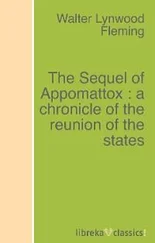Walter Gallichan - The Story of Seville
Здесь есть возможность читать онлайн «Walter Gallichan - The Story of Seville» — ознакомительный отрывок электронной книги совершенно бесплатно, а после прочтения отрывка купить полную версию. В некоторых случаях можно слушать аудио, скачать через торрент в формате fb2 и присутствует краткое содержание. Жанр: foreign_antique, foreign_prose, Путешествия и география, на английском языке. Описание произведения, (предисловие) а так же отзывы посетителей доступны на портале библиотеки ЛибКат.
- Название:The Story of Seville
- Автор:
- Жанр:
- Год:неизвестен
- ISBN:нет данных
- Рейтинг книги:4 / 5. Голосов: 1
-
Избранное:Добавить в избранное
- Отзывы:
-
Ваша оценка:
- 80
- 1
- 2
- 3
- 4
- 5
The Story of Seville: краткое содержание, описание и аннотация
Предлагаем к чтению аннотацию, описание, краткое содержание или предисловие (зависит от того, что написал сам автор книги «The Story of Seville»). Если вы не нашли необходимую информацию о книге — напишите в комментариях, мы постараемся отыскать её.
The Story of Seville — читать онлайн ознакомительный отрывок
Ниже представлен текст книги, разбитый по страницам. Система сохранения места последней прочитанной страницы, позволяет с удобством читать онлайн бесплатно книгу «The Story of Seville», без необходимости каждый раз заново искать на чём Вы остановились. Поставьте закладку, и сможете в любой момент перейти на страницу, на которой закончили чтение.
Интервал:
Закладка:
Columbus now longed to settle quietly in Seville, and to end his days there. He found that his popularity was waning, and that his rents had not been collected properly during his absence. With the death of Isabel he lost royal patronage. His last voyage had cost him much; but the people of Seville believed him to be immensely rich, whereas his income was now meagre. 'Little have I profited,' writes Columbus, in a letter, 'by twenty years of service, with such toils and perils; since, at present, I do not own a roof in Spain. If I desire to eat or sleep I have no resort but an inn; and for the most times have not wherewithal to pay my bill.'
In his last days we picture Christopher Columbus bending over the manuscripts, which may be seen in the Biblioteca Columbina, the library at Seville founded by the natural son of Columbus. One of the manuscripts treats upon biblical prophecy. It was written to appease the Inquisitors, who, to the last, suspected the discoverer of heresy. Writing of this Apologia, Washington Irving says that the title and some early pages of the book are by Fernando Columbus; 'the main body of the work is by a strange hand, probably by Friar Gaspar Gorricio, or some other brother of his convent.' There are signs in the hand-writing that Columbus was old and in poor health when he wrote the work. The characters are, however, distinct. There are passages from the Christian Fathers and the Bible, construed by the author into predictions of the discovery of the New World.
The gallant voyager was now prematurely aged, though he had led an abstemious life. Disappointment at the neglect of the world no doubt preyed upon his spirits in these last days of his career, for it is said that he possessed 'a too lively sensibility.' Upon the whole, Columbus was ill-used by Spain, though his memory is revered. It is the old, sad story of worth and genius. In 1506 Cristobal Colon died in a poor lodging at Valladolid. He left a son, born to him by his mistress, Beatrix Enriquez. In his will Columbus left money to Beatrix.
Great honour was paid to the body of the famous explorer. Columbus was buried in the parish church of Santa Maria de la Antigua. Some years later the Sevillians desired that the remains should be removed to their city, and they were then carried to the Carthusian monastery of Las Cuevas, to the Chapel of St. Ann, or of Santo Christo. The house of Las Cuevas was a fine one, celebrated for its pictures and treasures, and surrounded with orange and lemon groves. But the bones of Columbus were not to remain in Seville. They were taken, in 1536, to Hispaniola, and laid in the principal chapel of the Cathedral of San Domingo. Finally the remains were removed to Havanna.
While paying due respect to Christopher Columbus, we must not forget the great services rendered to the country generally, and to Seville, by Fernando de Magallanes, or Magellan, who embarked at that port in August 1519 with five vessels. Passing the Canary Islands and Cape Verde, the Portuguese explorer reached Brazil, and went south to Patagonia, 'the land of giants,' arriving eventually at the dangerous straits which bear his name. Magellan never returned to Spain. Only two of his ships reached the Moluccas, and of the five that started but one came back to Seville on the homeward journey.
These were the days when Seville was a bustling port of embarkation, and a great storehouse for treasure from America and the Indies. A fever of emigration seized the adventurous spirits of Andalusia; and Andrea Navigiero, a Venetian ambassador, who journeyed through Spain in 1525, says that the population of Seville was so reduced that 'the city was left almost to the women.'
The discoveries and conquests of Pizarro, who came to Seville after his first voyage, added to the enthusiasm for emigration. But Pizarro found it a hard matter to raise money for the expenses of a second expedition. He contrived, however, to man three ships, and was about to start, when the Council of the Indies sought to inquire into the state of the vessels. Fearing that he might be hindered from his scheme, the explorer set sail at San Lucar, in great haste, and made for the Canary Islands.
It was in January 1534 that Hernando, brother of Francisco Pizarro, was directed to return to Seville with a great hoard of treasure. The Custom House was filled with ingots, vases and ornaments of gold, and the inhabitants were much interested in the splendid spoil. Hernando Pizarro came later under a charge of cruelty to the subject race of South America. In his Spanish Pioneers , Mr Lummis tells us that 'Hernando was for many years imprisoned at Medina del Campo, and that he died at the age of a hundred. His brother, Francisco, who was born at Truxillo, in Estremadura, was a swineherd in his boyhood. Fired with the spirit of romance and adventure, the lad deserted his herd of pigs and ran away to Seville, where he found scope for his restless energy, and was able to influence seafaring men to accompany him on a cruise of discovery.
Seville was now at the height of its commercial prosperity. There was a constant come and go of trading vessels; the silk trade was greatly developed, and leather was made for the markets of Spain. Isabel took much interest in the improvement of the commerce of the city. When she ascended the throne, Seville was notorious for its gangs of thieves and criminals of all kinds, while the surrounding country was insecure through the numbers of bandits who waylaid and robbed traders and farmers on the roads. The Queen determined to stamp out crime by rigorous measures. She held a court in the salon of the Alcázar, and, in the Castilian custom, presided over the hearing of criminal charges. Once a week, Isabel sat in her chair of state, on a daïs covered with gold cloth. For two months she conducted a crusade against robbery in the city, recovering a great amount of stolen property, and condemning many offenders to severe penalties. Her severity struck alarm among the vagabond and thieving population, and probably terrified a number of the people who had reason to fear justice. Four thousand subjects left the town. The respectable burghers grew concerned, dreading that this depopulation would injure the city and deprive it of workmen. A deputation of citizens waited upon Isabel and begged her to relax her austerity. The Queen was therefore prevailed upon to offer an amnesty for all offenders except those convicted of heresy.
Isabel's fortunes as a ruler were largely determined by her charms. The Sevillians could not fail to worship the tall, fair young Queen, with the frank and beautiful countenance and blue eyes. Her very unconventionality delighted her court and the army; and when she rode at the head of her troops, in a suit of mail, with a sword by her side, every caballero was ready to follow the fair commander through blood and fire. Isabel's sword, a pretty little weapon, is to be seen in the Real Armeria at Madrid.
The Queen was one of those magnetic personages to whom all things are permissible. Even in modern times it is considered unseemly for a Spanish woman to engage in field sports, or any kind of athletic exercise; but the Spaniards of Isabel's day not only forgave, but revered, the Queen who sat on the judicial bench, donned masculine attire, carried weapons, and took a man's part in the government of her state. Had it not been for the terrible taint of bigotry, which led Isabel to sanction deeds of persecution and cruelty, her character would have presented an example approaching the excellence with which enthusiastic historians have credited it.
Four years after the accession of Isabel there began the reign of the Inquisition in Seville. When Alfonso de Hoyeda, Prior of the city, and Felipe de Barberis, Inquisitor of Sicily, persuaded Fernando that a crusade against heresy would replenish his exchequer by means of confiscation, the King was induced to listen to their proposal. At first Isabel recoiled from this scheme of torture and plunder. But her woman's mind and heart were not secure against the insidious influence of the priests, who used their utmost powers of suasion to convince her that Heaven approved of the destruction of heretics. Finally the Queen gave way; and the 17th of September 1480 saw the setting up of the tribunal of the Holy Office in the Dominican Convent of St. Paul at Seville.
Читать дальшеИнтервал:
Закладка:
Похожие книги на «The Story of Seville»
Представляем Вашему вниманию похожие книги на «The Story of Seville» списком для выбора. Мы отобрали схожую по названию и смыслу литературу в надежде предоставить читателям больше вариантов отыскать новые, интересные, ещё непрочитанные произведения.
Обсуждение, отзывы о книге «The Story of Seville» и просто собственные мнения читателей. Оставьте ваши комментарии, напишите, что Вы думаете о произведении, его смысле или главных героях. Укажите что конкретно понравилось, а что нет, и почему Вы так считаете.












